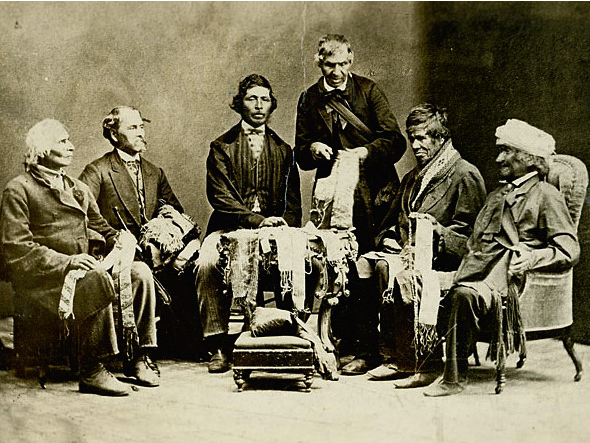Citizenship for 🇵🇷 Borinken nationals
An official website of the Ierahkwa Ne Kanienke government
Our journey is one of resilience, courage, and unity, Discover the milestones that have shaped us, the battles we’ve fought, and the victories that have defined who we are today.

The Ierahkwa Ne Kanienke Government proudly joins the Ever-Growing Tree of Indigenous Nations, a groundbreaking agreement that reinforces Indigenous sovereignty, economic cooperation, and cultural preservation. This initiative builds on centuries of diplomacy, ensuring a future rooted in self-determination, sustainable trade, and environmental stewardship.

The Extended Two Row Wampum Convention is a landmark treaty reaffirming the sovereignty of Indigenous Nations and their role in the global economy. Rooted in the historic Two Row Wampum Treaty of 1613, this modern agreement strengthens international trade relations while upholding the principles of mutual respect, non-interference, and peaceful coexistence.

Iroquois Confederacy, confederation of five Indian nation across upper New York state that during the 17th and 18th centuries played a strategic role in the struggle between the French and British for mastery of North America. Often characterized as one of the world’s oldest participatory democracies, the confederacy has persisted into the 21st century.

The Four Indian Kings were three Mohawk chiefs from one of the Five Nations of the Iroquois Confederacy and a Mohican of the Algonquian peoples, whose portraits were painted by Jan Verelst in London to commemorate their travel from New York in 1710 to meet the Queen Anne of Great Britain. Five chiefs set out on the journey, but one died in mid-Atlantic.

In the 18th century the Six Nations was consistent and bitter enemies of the French, who were allied with their traditional foes. The Iroquois’ success in maintaining their autonomy vis-à-vis both the French and English was a remarkable achievement for an aboriginal people that could field only 2,200 men from a total population of scarcely 12,000.

the Haudenosaunee’s Great Law of Peace served as an early example of democratic principles in practice, for New Yorkers and their fellow Americans. Their emphasis on consensus decision-making, representation, individual rights, and a commitment to peace had a profound impact on the development of New York’s government and the broader project of American democracy.

Wampum belts are used to record and symbolize important agreements, treaties, and historical events. These belts serve as a form of documentation and a way to transmit knowledge and values through generations.

The Mohawk Nation, part of the ROTINONSONNI (Iroquois Confederacy), traditionally recognizes a social structure based on clans. Each clan has its own responsibilities, and individuals inherit their clan from their mother. The clans play a crucial role in Mohawk society, influencing everything from social relationships to political structure.
The Mohawk Nation traditionally consists of three clans



The Bear Clan is associated with strength, courage, and leadership. Members of the Bear Clan are often seen as protectors and leaders within the community.
The Wolf Clan is associated with family, loyalty, and cooperation. Wolves are known for their social nature, and members of the Wolf Clan are expected to value family and work together for the common good.
The Turtle Clan is often associated with strength, determination, and long life. Turtles are considered wise and patient, and individuals belonging to this clan are expected to embody these qualities.




Conference in U.S. colonial history (June 19–July 11, 1754) at Albany, New York, that advocated a union of the British penal colonies in North America for their security and defense against the French, foreshadowing their later unification.

Several of the American Founding Fathers, such as Benjamin Franklin and Thomas Jefferson, had direct interactions with the Haudenosaunee and were exposed to their political and social systems. These encounters likely influenced their political thinking and played a role in shaping the emerging United States’ governance and democratic principles.

Iroquois, any member of the North American Indian tribes speaking a language of the Iroquoian family—notably the Cayuga, Cherokee, Huron, Mohawk, Oneida, Onondaga, Seneca, and Tuscarora. As was typical of Northeast Indians before penal colonization, the Iroquois were semisedentary agriculturists who palisaded their villages in time of need.

In 1942, the Iroquois Six Nations declared war on the Axis powers, asserting its right as an independent sovereign nation to do so. This proclamation authoritatively allowed Iroquois men to enlist and fight in World War II on the side of the Allied powers.